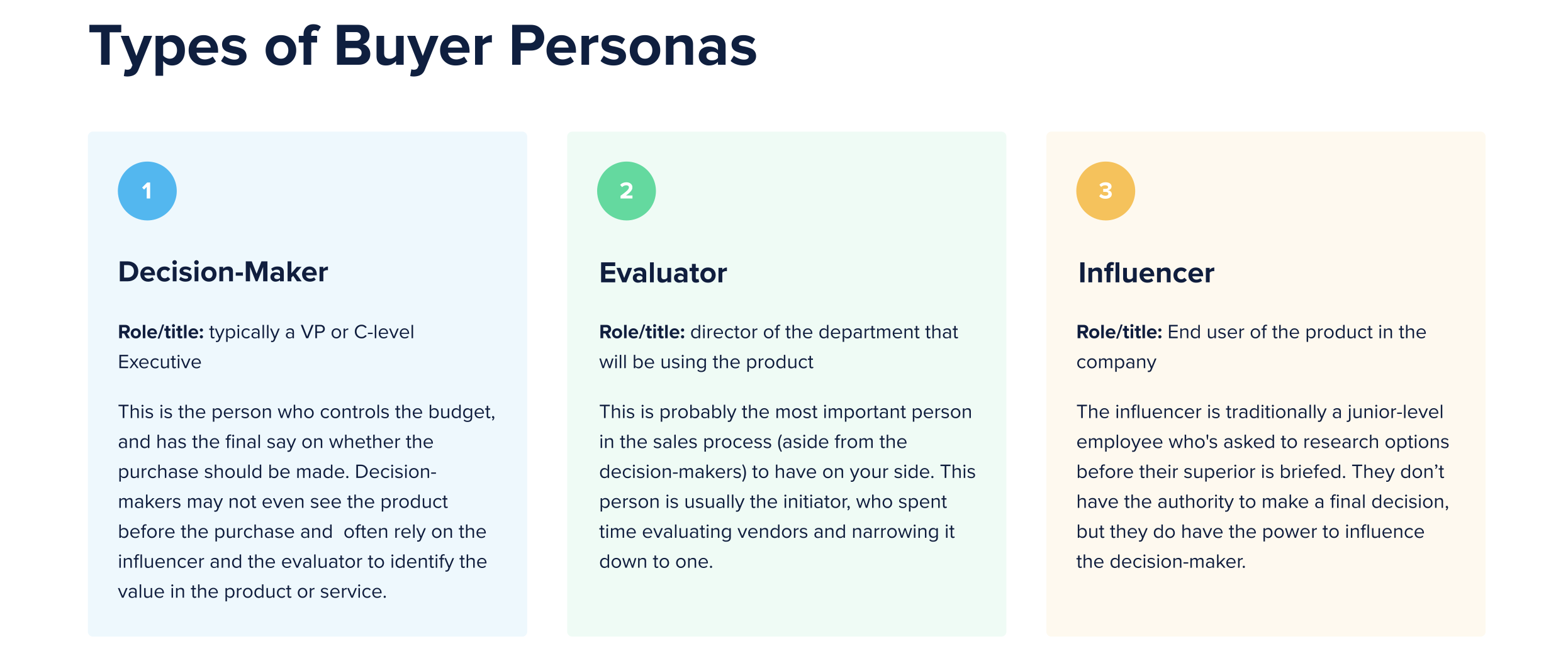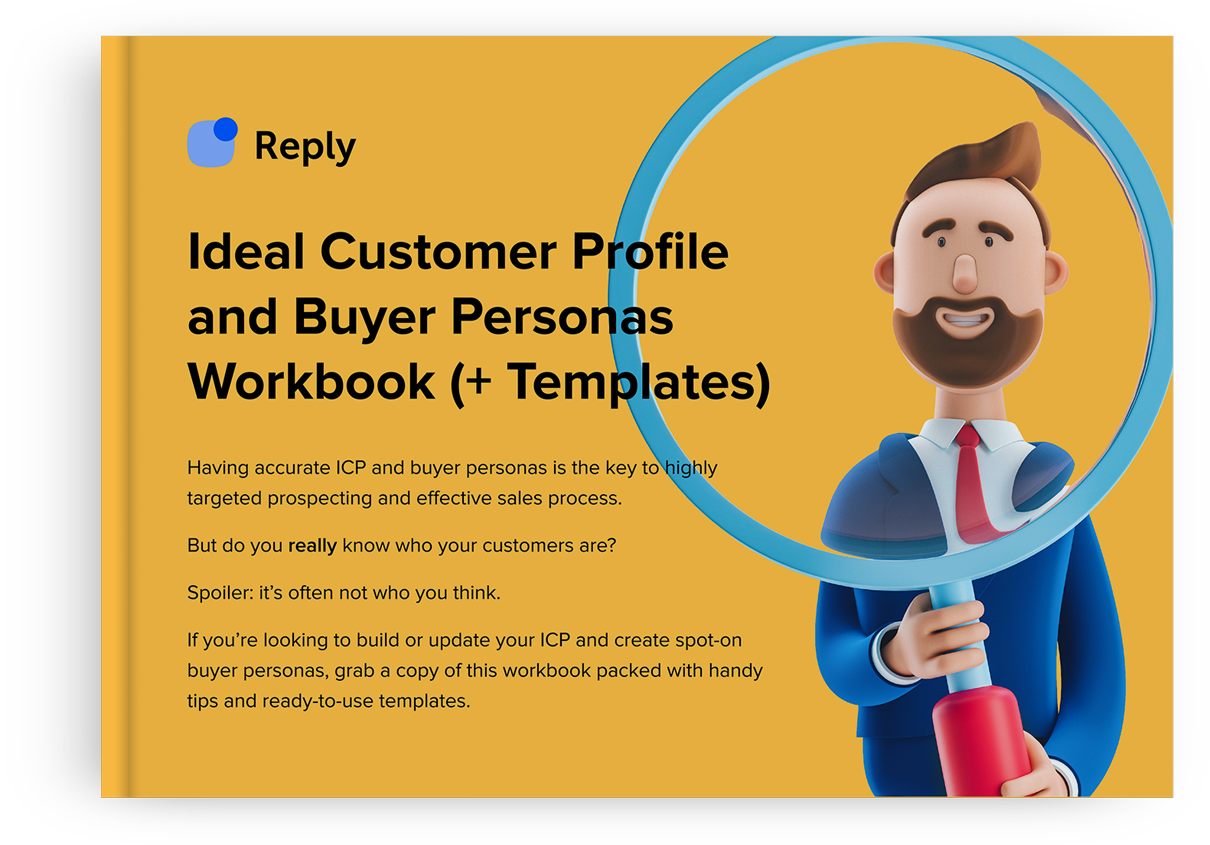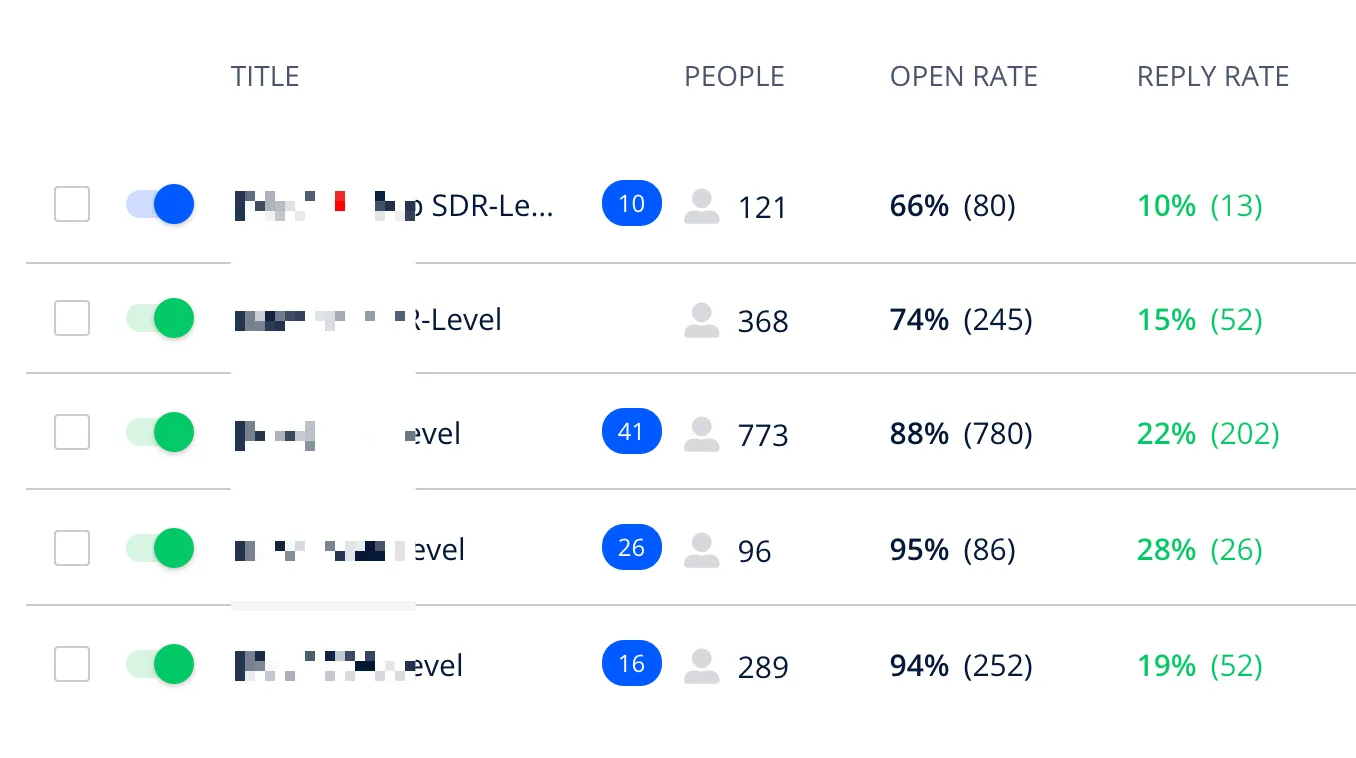3 useful tactics for selling to C-suite
Reaching the upper echelons of any organization can be a formidable task. C-suite executives are usually hard to reach, so selling to them demands a tailored approach that respects their time, aligns with their priorities, and speaks to their strategic concerns.
Let’s talk about a few battle-tested tactics that can open doors, earn trust, and ultimately lead to successful partnerships with C-suite leaders.
1. Find out what really matters to the C-suite
C-suite executives are responsible for different business domains: processes, revenue, execution, sales, marketing, and so on. At the highest level, selling to the C-suite means helping them improve and optimize those domains, whether that’s through reducing costs or improving performance. The bigger the business, the bigger the objectives and investment profits should be.
However, simply promising to save money or deliver better results will lead to more of those generic pitches that get lost in the prospect’s inbox. To close the deal with the C-suite you’re going to have to find out what matters to them specifically. What are their goals, both in the short term and long term? How do they measure performance? What’s preventing them from reaching those goals?
Answering these questions means doing some research. Fortunately, there’s plenty of information freely available online. Businesses will often share relevant news — such as recent investments or new product launches — on their website or social media feeds. Setting a Google Alert for the company’s name means you’ll always be up to date, while LinkedIn can help you get a better understanding of the C-suite executives themselves and the content they engage with.
The key is to analyze the company and test different ideas of your product application for their needs. So when you choose whom to target, you apply it to the business and his role inside the business.
For example, when we sell Reply to a small business, we will offer to show them how to implement a growth strategy, starting with a one-seat proof of concept and then nurturing the lead to buy more seats.
For bigger companies, we look at their current sales process and see how they can benefit from the product. How much time does the manager save for other activities like meetings? How can it apply to the general sales strategy? How much revenue can they achieve with it? Everything is connected to size, role, domain, stage, recent activities, market, and so on.
2. Build strong relationships with the C-suite
When it comes to standing out from hundreds of other sales pitches, you simply can’t beat a strong personal relationship. By establishing a genuine human connection first, you position yourself as a trusted advisor rather than just another salesperson. This trust can be the deciding factor in choosing your solution over a competitor’s.
Strong relationships help with every aspect of the sale, including the tactics we’ve already discussed. When the C-suite decision-maker trusts you, they’re more likely to open up about their pain points, challenges, and goals. They can also refer you to others involved in the purchasing decision, so you can be confident you’re talking to all the right people.
Of course, relationships aren’t built overnight. They take time and effort, where you consistently offer value and demonstrate that you’re committed to a positive outcome for both sides. However, when it comes to building relationships with the C-suite, it’s often worth going the extra mile.
For example, if you know the executive has a hobby or interest outside of work, find ways to incorporate that into your engagement. If they’re into golf, invite them to a charity golf event. Similarly, if the prospect is passionate about a particular cause, align your pitch or engagement around that, perhaps offering a partnership where a percentage of the sale goes to a charity they support.
Sometimes, it also makes sense to offer exclusive access to your expertise or your solution when targeting high-priority accounts. This might mean personalized training for their team, an extended test drive of your product, or early access to exclusive features.
By building a relationship, you can not only make the sale but pave the way for future upsells, referrals, and long-term partnerships.
3. Keep it clear and concise
Being a C-suite executive comes with plenty of responsibilities. Their time is incredibly valuable. When you get the opportunity to communicate with them, make every word count.
The key challenge when selling to the C-suite is that they normally have too little time to dive into the details of your product offering. Unlike the end-users who’d be willing to learn more about the specific features and integrations, a C-level executive would be more interested in how the product generates ROI in general.
So you need to be able to get your message through in a clear and concise manner that relates to their day-to-day focus/concerns. Getting through to them and delivering that message effectively is a much more productive use of time as they’re the ones with decision-making authority and access to the budget.
When you’re preparing to talk with the C-suite, use the following tips to keep your message understandable and compact:
- Plan ahead. Before you send that email or jump on a call, outline the key points you want to convey. This helps you stay on track and avoid going off on any unnecessary tangents.
- Use visual aids. Infographics, charts, some slides, videos, and other means of visual prospecting can help you convey complex information quickly and effectively and add some more personalization to your engagement efforts.
- Be ready to answer any questions. It’s important to know the concerns that may arise during the call and be ready to address any objections directly, rather than rigidly sticking to a sales script that may no longer be relevant.
- Seek feedback. After presenting your message, ask if there are any areas they’d like more information on. This ensures they’ve understood what you’ve said while also showing that you value their input.
One more thing that’s worth mentioning here is that your communication should always have a clear purpose and carry real value. Be it a discovery call or a follow-up email, keep your messaging on point and try to bring something to the table before you ask for anything in return (even if it’s just 5 minutes of their time).









![How to Write Your Perfect LinkedIn Connection Message [With 15+ Templates] How to Write Your Perfect LinkedIn Connection Message [With 15+ Templates]](https://reply.io/wp-content/uploads/linkedin.messages-1024x538.jpg)